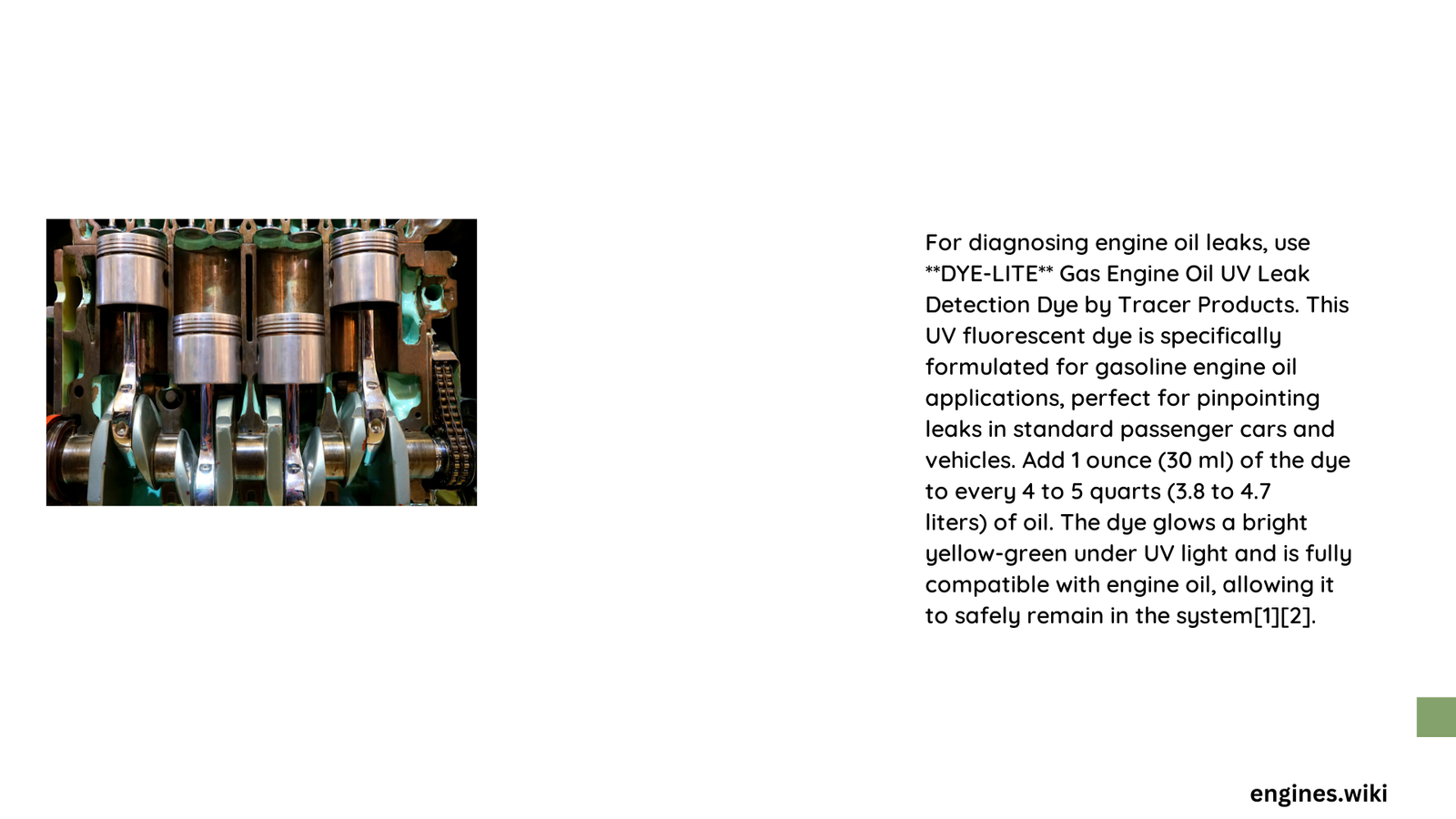Engine oil dye for leaks represents a sophisticated diagnostic technique that enables automotive professionals and vehicle owners to pinpoint precise oil system leak locations using specialized fluorescent compounds. By introducing a UV-reactive tracer into engine oil, technicians can illuminate hidden leakage points with remarkable accuracy, transforming complex diagnostic processes into straightforward visual inspections.
What Makes Engine Oil Dye Effective for Leak Detection?
How Do UV Fluorescent Dyes Work?
Engine oil dye for leaks operates through a sophisticated mechanism of chemical fluorescence. When introduced into the engine’s lubrication system, these specialized dyes:
- Blend seamlessly with existing engine oil
- Remain stable under high temperatures
- Emit bright, distinctive colors under ultraviolet light
- Penetrate microscopic leak pathways
| Dye Characteristic | Performance Specification |
|---|---|
| Fluorescence Color | Yellow-Green |
| Temperature Tolerance | Up to 250°F |
| Compatibility | Most Mineral and Synthetic Oils |
| Detection Range | Microscopic to Large Leaks |
What Chemical Compositions Enable Leak Detection?
Typical engine oil dye formulations include:
- Fluorescent Organic Compounds
- Rhodamine-based molecules
- Coumarin derivative tracers
-
Specialized phosphorescent agents
-
Performance Additives
- Non-corrosive stabilizers
- Temperature-resistant carriers
- Oil-soluble molecular structures
How to Apply Engine Oil Dye Correctly?
Preparation Steps
- Ensure engine is at operating temperature
- Verify oil level is within recommended range
- Select appropriate UV dye for specific oil type
Application Process
- Add recommended dye quantity (typically 1 oz per 4-5 quarts)
- Run engine for 10-15 minutes
- Use UV light to scan potential leak areas
- Document and photograph findings
What Equipment Supports Leak Detection?
Essential diagnostic tools include:
- High-intensity UV flashlight
- Protective eyewear
- Clean white inspection surface
- Mechanic’s inspection mirror
What Are Common Leak Detection Challenges?
Potential complications during engine oil dye leak detection:
- Interference from existing oil residues
- Complex engine geometry
- Limited UV light penetration
- Subtle leak manifestations
Cost and Accessibility Considerations
- Average dye kit price: $15-$35
- Available at automotive supply stores
- Online purchasing options
- Professional diagnostic services
Expert Recommendations

Successful engine oil dye leak detection requires:
– Systematic approach
– Quality UV light source
– Patience during inspection
– Professional-grade dye products
Maintenance Tips
- Regular system inspections
- Prompt leak repair
- Use manufacturer-recommended dyes
- Document diagnostic findings
Safety and Environmental Considerations
- Use in well-ventilated areas
- Wear protective equipment
- Dispose of used materials responsibly
- Follow manufacturer guidelines
Technical Precision Matters
Accurate leak detection prevents:
– Catastrophic engine failure
– Excessive oil consumption
– Potential environmental contamination
– Unnecessary repair expenses
Final Diagnostic Insights
Engine oil dye for leaks transforms complex diagnostic challenges into manageable, precise investigations. By understanding chemical principles, applying systematic techniques, and utilizing advanced tools, automotive professionals can efficiently identify and resolve critical lubrication system issues.
